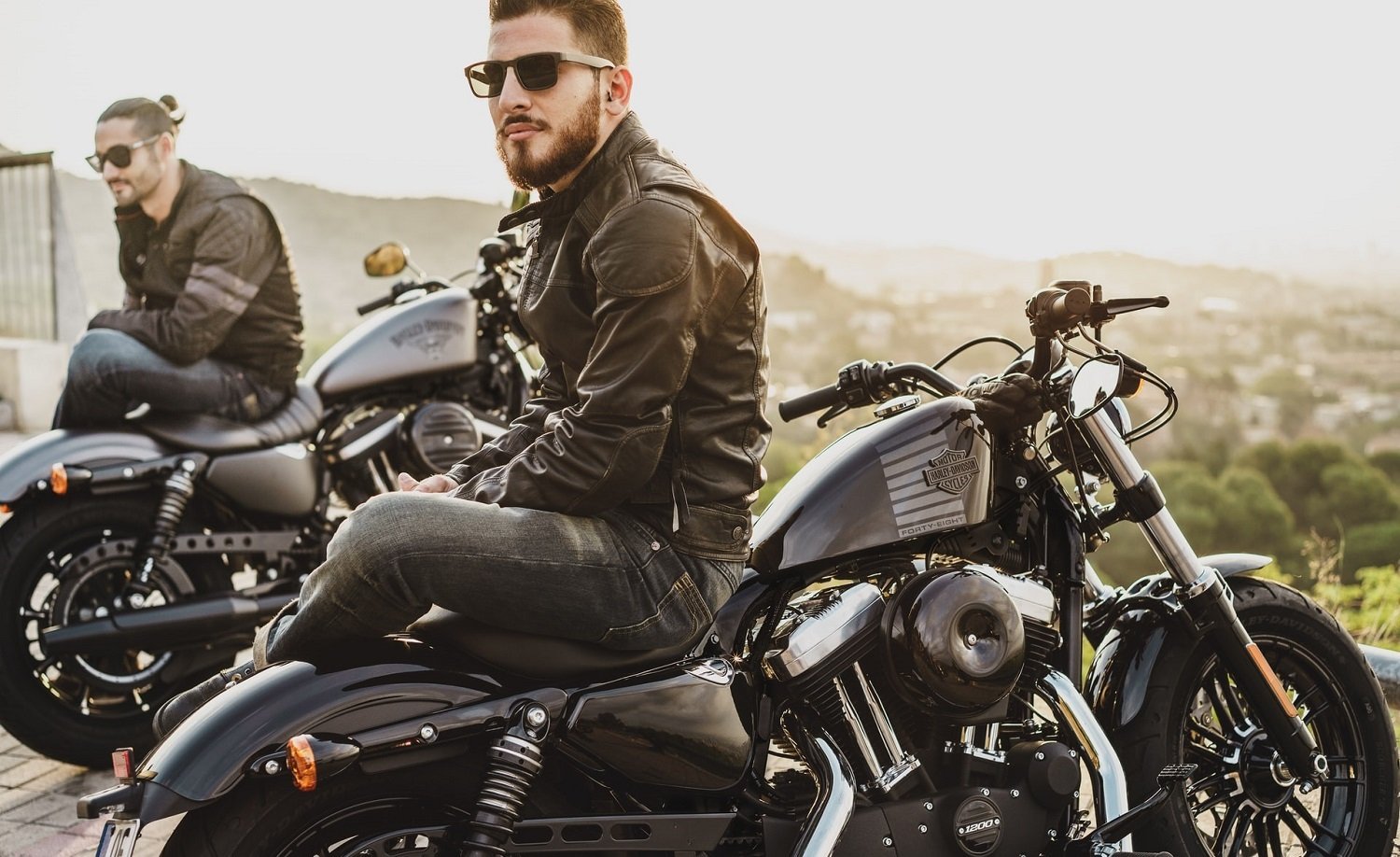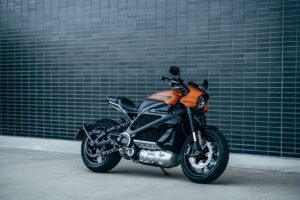Riding a motorcycle with prescription glasses or goggles
Updated on | By Mohit Chauhan

Reader Disclosure
Our editorial content is reader-supported. If you click on some of our links, we may earn a small commission. Learn more here.Anyone planning a motorcycle trip wants one thing above all: have fun, leave everyday life behind and enjoy freedom on two wheels! The last thing you need is trouble with your accessories or unnecessary risks.
There are riders who just can’t do without their prescription glasses: all the short-sighted motorcyclists, for example, who wear glasses practically 24 hours a day. Truth be told, by the time we will reach the age of 50, the majority of us will depend on visual aids. We might require prescription lenses or corrective glasses to improve our vision.
And then there are riders who cannot do without sunglasses on a bright sunny day. Wearing them becomes more imperative in case your helmet is a classic open face one. These glasses protect from foreign particles that may accidentally hit you during your ride and hinder the vision. Moreover, if you are riding at a significantly high speed, direct impact against any foreign particle can have disastrous consequences leading to accidents.
However, glasses and motorcycle helmets are obviously not the ideal pair. Even putting it on and taking it off becomes a challenge as they usually get stuck inside the helmet. Besides, if the helmet presses on to the glasses, things can get quite uncomfortable and may even cause headaches.
Today we will share some tips and tricks to ride a motorcycle with your glasses on. Keep on reading further to know how.
Things to know
- As per Vision Council, 37.1 percent of Americans regularly use two or more pairs of eyeglasses and 51.7 percent of Americans regularly use two or more pairs of sunglasses including our motorcyclists. But not all motorcycle helmets are designed for people who wear glasses. Flip-up helmets, usually provide the most ideal fit because they are more spacious than full face helmets. However, this is not entirely true for all kinds of flip-up helmets.
- While choosing a motorcycle helmet, we strongly recommend to try them along with your glasses. The most ideal way, however is to take a test ride with both your helmet and glasses on. This is the only way to determine whether your glasses are fitting well or if you are experiencing some kind of unpleasant tremble at high speeds. Some helmets allow the cheek pads and pads on the top of the head to be adapted to individual needs.
- As a rule, glasses do not have to be removed when putting on the helmet; Flip-up helmets prove to be ideal in such cases.
- Some glass frames are also better suited for motorcycling. Riders who wear glasses should prefer narrow frame with straight temples (this won’t affect your field of vision).
- Plastic glasses provide better protection in the event of an accident as the standard glass might shatter in extreme situations, which in turn can injure the eyes and face.
- In addition to those who wear glasses, people with contact lenses also have to be keep few things in mind; It is recommended to switch to glasses while riding since helmets usually allow air to flow inside to keep the rider ventilated. This can cause the lenses to dry out, which is in turn can hinder the vision. Progressive lenses (multifocal lenses) are equally dangerous, which is why experts recommend distance glasses.
Can you ride a motorcycle if you wear prescription glasses?
Fortunately, an optical correction does not prevent you from riding a motorcycle. Applicants at the DMV are rarely refused due to myopia or hyperopia (application is denied only in adverse conditions). And if you are a rider that has been prescribed to wear glasses; all you have to do is choose an ideal solution that can optimize your field of vision along with safety. For ideal visibility while riding a motorcycle, you have the choice between wearing glasses or contact lenses. Glasses are generally less tiring to wear, but if they do not fit well around your helmet, they can fog up and increase uneasiness. In this case, opt for anti-fog treated glasses or special motorcycle eyeglasses. As for lenses, they can be fun to wear and comparatively have wide field of vision than glasses, but they generally cause irritation if used for prolonged hours.
Glasses vs. Contact Lenses: Which one is ideal?
Motorcyclists love to use contact lenses while riding because, unlike glasses, they do not press against the helmet and you can enjoy undisturbed all-round visibility which makes you feel safe behind the wheel. But not all lenses are optimal; it is recommended to wear daily disposable contact lenses since they are less complicated, especially when you are on a multi-day adventure, as there is no need to clean them.
However, the constantly prevailing air flow inside the helmet while riding can lead to dry, irritated eyes including an uncomfortable feeling while blinking. You may need to put eye drops in order to keep your lens moist and lubricated (which, by the way, also applies to all kinds of sports in which the eyes are exposed to the wind). This problem makes them quite inefficient when a rider is wearing a modular or an open face helmet.
So, while lenses are an ideal optical correction solution for many riders, they are not always suitable depending on the nature of adventure. Moreover, it is quite common to lose a lens or have a bad reaction to it. If you are on a motorcycle trip, having a pair of glasses will allow you to continue your journey without any trouble.
Prescription motorcycle riding glasses
Personalized motorcycle glasses from brands like Oakley that have an option to add prescription lens can be an ideal solution for bikers suffering from myopia or any other sight problem. Indeed, thanks to their design, it is possible to wear them while riding without compromising on the comfort.
Moreover, these are perfectly adjustable to any full-face helmet. These riding glasses adapt perfectly to your face and thus offer comfort and enhanced visibility while simultaneously protecting your eyes from any kind of impact.

Is wearing prescription glasses mandatory while riding a motorcycle?
Just like riding style, physical qualities of every rider differ as well. Each rider is unique with different riding abilities and may or may not have certain physical peculiarities; poor vision, for example. Thus, individual driving license restrictions have been put in place to regulate and protect all drivers. Obviously, not everyone is affected by these restrictions, they are defined on a case-by-case basis, by approved doctors, during the medical examination of the applicant.
Say for instance, if your license issued by the DMV of New Jersey is marked Restriction 01, this means that you must drive with a vision correction device (glasses or lenses). While there are strict federal vision standards for commercial license holders, for non-commercial license holders, like a motorcyclist, there are no federal standards. Individual states and districts have their own laws regarding these rules. Riding without a prescription glass may lead to following legal actions depending on your state:
- Suspension of the license for a period of up to 3 years
- Immobilization of the vehicle
- Obligation to attend a road safety awareness course at one’s own expense
Additionally, in the event of an accident, your insurer may cover bodily injury and material damage caused to third parties, however, they may be reluctant to reimburse your own damages since you were not wearing prescription glasses. It is also possible that they might reduce the amount of your compensation or even refuse compensation completely.
Which glasses shape are suitable for motorcycle and scooter riders?
Narrow frames with thin, long temples that do not obstruct the field of vision are ideal for motorcycle riders. Light weight and flexible frames, so called flex models, are particularly pleasant. Titanium glasses, for example, are not only light, they are also durable and robust. But keep in mind, like any other pair of glasses, motorcycle glasses have to fit comfortably and securely so that they do not slip.
Glasses with soft, elastic temples are not recommended, as the temples can quickly bend between the helmet padding. Motorcyclists should also refrain themselves from massive, large and heavy frames. But a glass with very small lens will also restrict the field of vision, as they may obstruct your rear-view mirror vision. So, keep these things in mind.
Choosing the right helmet for your glasses
Choosing a motorcycle helmet is a kind of philosophy of life. The respective type says a lot about the style and character of the rider who wears it. But apart from aesthetics, if you wear glasses, these helmets should be compatible in order to provide comfort along with safety. Following things should be kept in mind by glass wearers while choosing the motorcycle helmet.
- Comfortable fit
The fit of the motorcycle helmet should be designed so that the glasses can be put on comfortably. This requires soft padding inside the helmet as it provides more room for the temples and prevents any pressure points, pain or damage to the glasses. If at all possible, look for helmets with removable cheek pads.
Important: The helmet must be tight against the head. This is the only way to ensure that its protective features remain fully functional.
Read more: Motorcycle helmet measurement guide
- Airtight seal with a good visor
In order to avoid wind buffeting on the glasses, motorcycle enthusiasts should wear helmets with a particularly good seal around the visor. Nevertheless, it is important that a balance is also achieved between proper sealing around the visor and ventilation around the head, else the temperature might quickly plummet and make your ride quite uncomfortable on a hot sunny day.
- Anti-fog visors
Riders can use a Pinlock visor so that the visor of their own helmet does not fog up while riding. Two visor glasses are pinned together to prevent condensation of the breathable air. This proves to be very advantageous, especially during the rain. In return, however, users have to live with double refraction.
Read more: How to prevent your helmet from fogging
Helmets ideal for glass wearers

HJC i90 Helmet
With the i90 from HJC you get a modular helmet for just $200 – making it truly an ideal variant for entry level riders. There are at least 5 colors and 9 sizes to choose from.
Under the rather simple hood is polycarbonate, which makes the model nice and light. On top of that, a tinted and adjustable sun visor is included which is equipped with a simple replaceable mechanism that makes it easier to change.
This flip-up helmet is Pinlock-ready, and you should treat yourself to this upgrade in order to ride fog-free. Besides, the lining of the helmet can be removed and washed, and the model is highly suitable for people who wear glasses.

Shoei Neotec 2 Helmet
The Neotec 2 is a solid flip-up helmet with no real weak points. The helmet, which is suitable for people who wear glasses, is convincing in terms of operation, comfort and workmanship. It is completely compatible with Sena SRL1 and does maintain an optimal balance between ventilation and noise (its enhanced shell shape assists aerodynamics and suppresses hissing sound that usually enters through the air vents).
Shoei offers top quality helmets and are usually high priced, however, if you are willing to invest $750, we guarantee that you will enjoy Neotec 2 for a long time!

Shark D-Skwal 2 Helmet
The D-Skwal from Shark convinces with a good fit and a scratch-resistant visor. In addition, the visor attaches itself to the sealing strip of the helmet thanks to the “Auto seal” technology. In this way, wind buffeting around your glasses can be greatly reduced while riding. If desired, the visor can be upgraded with an additional Pinlock lens for winters.
All in all, a lot of aspects were considered by Shark while designing this helmet particularly for people who wear glasses.
6 Tips for choosing the right motorcycle glasses
Choosing an ideal combination
It is recommended to try your helmet with your glasses on. Nevertheless, do not hesitate to go to an optician with your helmet under your arm. After all, how will you know if your glasses are compatible with your helmet if you don’t try them on together?
Choosing the right frame
Preferably go for flexible frames that are not too wide and have long temples. Biker glasses or goggles should above all be comfortable and must be easy to wear with your helmet on. Also make sure that engraved designs on the frame do not scratch around your ears. To test them, apply some pressure with both your hands and check the comfort level.
Dedicated helmets for glass wearers
Most standard full face helmet models create pressure points that push the goggles or prescription glasses up or down, impacting the field of vision. A dedicated helmet that is built especially for glass wearers will have grooves to offer better stability, which in turn guarantees more safety. Of course, modular helmets are ideal when it comes to glass wearers, but this comfortability has its own drawbacks since they do not guarantee optimal safety in case of a fall.
Go for an anti-fog lens
Fog is the number 1 enemy of bikers, especially if they wear glasses. Anti-fog lenses are ideal in this case since they reduce the chances of fogging which may restrict your field of vision (combine this with an anti-fog helmet visor and you can completely eliminate this problem). Ask your optician for an anti-fog treatment for your glasses.
UV Protection lens
It is ideal to choose a photochromic lens for your glass. This makes them dual purpose, and thus can be used both indoors or on a bright sunny day where they get tinted according to the brightness. You can also opt for sunglasses that reduce glare, if they are polarized, they also cut off annoying reflections. However, it should be noted that these should not be too dark.
Some riders even prefer a tinted visor with normal pair of glasses. It is totally up to you.
Glass quality
The quality of glass is really important in the event of impact or accident. Polycarbonate lenses generally ensure better protection since this material is almost unbreakable. Another important aspect to bear in mind is its refractive index. It is quite common for glasses to refract light during the night, which may hinder the normal vision. It is essential to opt for glasses with an anti-reflective treatment, which reduces the effect of refraction that is either coming from the oncoming vehicle or from street lights.
Our recommendation
Oakley Radar® EV Path®

Oakley has been offering motorcycling glasses with captivating and extremely functional features in the American market for more than 40 years now. The first striking aspect of this model is the fact that their lenses are entirely made of ‘Plutonite’, a material that allows to reflect 100% of UVA, UVB and UVC rays in addition to blue-light which is emitted by electronic gadgets (Televisions / Laptops), causing harm to your vision.
The design is modern but at the same time it proves perfect to be used not only while motorcycling but also while embarking on any other adventure sports. Thanks to the particular curvature of the lenses, these glasses are able to ensure optimal vision in any circumstance and have a fairly enveloping shape to completely protect the eyes. For riders with prescription glasses, the brand also allows you to add prescription values for a customized lens!
That’s all folks. Feel free to reach us in case of any queries.




